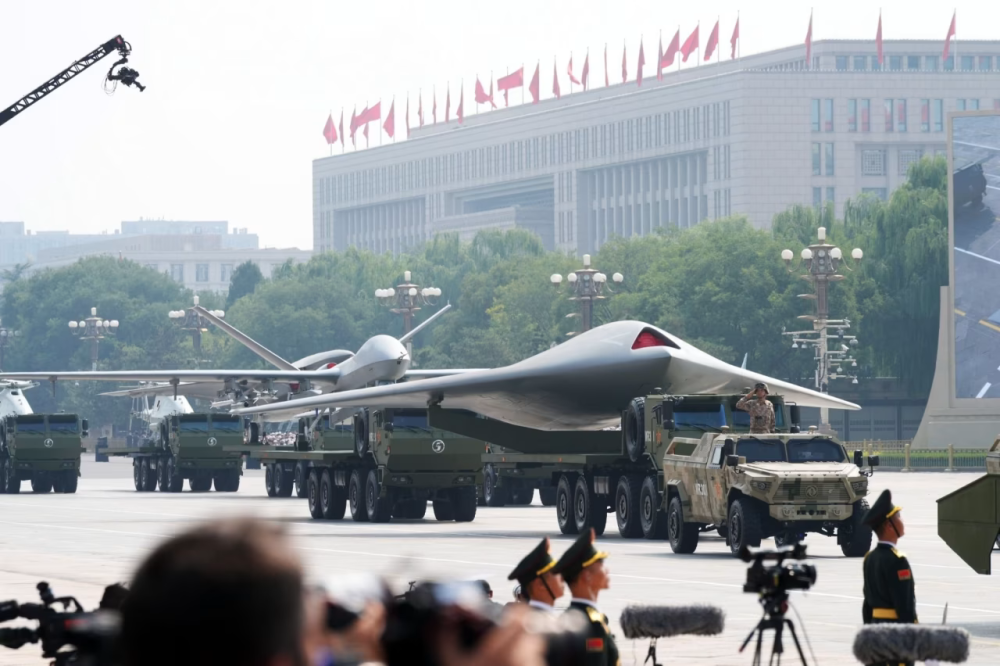
Trung Quốc với chiến lược "dung hợp quân-dân" hiện đại hóa quân đội thông qua AI
-
Trung Quốc đang đẩy mạnh chiến lược "dung hợp quân-dân", tận dụng đại học và doanh nghiệp tư nhân để tích hợp AI vào quân đội, đặc biệt là Quân Giải phóng Nhân dân (PLA).
-
Đại học Giao thông Thượng Hải đã ký 14 hợp đồng quốc phòng AI chỉ trong năm 2023-2024, bao gồm dự án triển khai hệ thống sát thương tự động (“kill webs”) có khả năng điều chỉnh theo thời gian thực khi chiến đấu trên biển.
-
Hệ thống "kill web" có thể xử lý kịch bản tấn công tên lửa cường độ cao với 31 mục tiêu, tạo phương án phản công bằng hàng chục drone chỉ trong 2,26 giây.
-
PLA đang mở rộng nguồn cung ứng, không chỉ giới hạn ở các nhà thầu quốc phòng nhà nước mà còn hợp tác với hơn 300 đơn vị ngoài hệ thống quốc phòng truyền thống – hơn 85% là doanh nghiệp tư nhân và trường đại học dân sự.
-
Trong số các công ty ký nhiều hợp đồng nhất có iFlytek Digital, công ty con tách biệt khỏi iFlytek – từng bị Mỹ trừng phạt năm 2019. iFlytek Digital đã ký 20 hợp đồng, chủ yếu xử lý và phân tích dữ liệu.
-
Công ty Tứ Xuyên Tengden – nhà sản xuất drone tấn công TB-001 – ký 7 hợp đồng, chủ yếu thuê drone và thử nghiệm bay.
-
Việc công bố công khai một phần hợp đồng quốc phòng cho phép Trung Quốc dễ dàng tiếp cận nguồn lực ngoài nhà nước, ngược lại với sự bảo mật cao của Mỹ.
-
Trung Quốc phô diễn sức mạnh AI trong lễ duyệt binh với sự góp mặt của drone tấn công, thuyền không người lái và chó robot trước lãnh đạo Nga và Triều Tiên.
-
Dữ liệu từ Trung tâm Công nghệ và An ninh mới nổi (CSET) tại Đại học Georgetown cho thấy tham vọng to lớn và hệ thống hóa của PLA trong hiện đại hóa quân sự bằng AI.
-
Mỹ đối mặt với lựa chọn khó khăn: tăng trừng phạt hoặc cố gắng duy trì hợp tác khoa học và công nghệ với Trung Quốc.
📌 Trung Quốc đang đẩy mạnh chiến lược "dung hợp quân-dân", tận dụng đại học và doanh nghiệp tư nhân để tích hợp AI vào quân đội, hợp tác với hơn 300 đơn vị ngoài hệ thống quốc phòng truyền thống – hơn 85% là doanh nghiệp tư nhân và trường đại học dân sự. Đại học Giao thông Thượng Hải đi đầu với hệ thống "kill web" xử lý 31 mục tiêu chỉ trong 2,26 giây. Mỹ hiện đang phải cân nhắc giữa gia tăng trừng phạt hoặc tìm cách cạnh tranh bền vững.
https://www.wsj.com/world/china/china-military-ai-partners-7836a2bc
China Is Using the Private Sector to Advance Military AI
A wide variety of companies and universities is helping the People’s Liberation Army modernize with cutting-edge technology, new data shows
By
Josh Chin
Sept. 3, 2025 5:59 am ET
Advanced Chinese weaponry was on display at a parade in Beijing on Wednesday.
In a study published in January last year, researchers at Shanghai Jiao Tong University showed how artificial intelligence could be used to deploy weapons systems in automated “kill webs” that would adjust in real time to battlefield changes during combat at sea.
Six days later, China’s military announced that the university had won a defense contract to make the idea a reality.
It was the seventh public defense contract to develop or maintain AI-related systems that Shanghai Jiao Tong had signed since the start of 2023. The university would go on to land seven more before 2024 was out. Aside from the maritime kill-web project, the school was also tasked with helping the military track fast-moving targets using layered AI models, rapidly generate underwater drone designs and make drone swarms more sensitive to changes in radio frequencies.
For years, Chinese leader Xi Jinping has tried to recruit his country’s civilian institutions to help the People’s Liberation Army modernize, a concept known as “civil-military fusion.” With AI, the campaign appears to be producing results.
China’s military has gone outside its typical network of state-owned defense contractors and military-linked research institutes in recent years, tapping hundreds of suppliers including private companies and civilian universities in a push to incorporate AI into its operations and weapons systems, according to new data published Wednesday by researchers at Georgetown University.
The military procession was watched by the leaders of China, Russia and North Korea.
While the U.S. and Chinese militaries have both sought to tap the knowledge and innovative energy of universities and the private sector, the data indicates the PLA has been able to do it more systematically. That gives China a potential leg up in the challenging task of weaving AI into national defense, security analysts say.
It also puts the U.S. in a bind as it tries to prevent China from developing technologies that might give its military an edge over American forces.
“Just in this data set, the sheer ambition of what they’re trying to do is surprising,” said Cole McFaul, a senior research analyst at Georgetown’s Center for Security and Emerging Technology who helped gather the data. “That there’s such a wide range of these technologies speaks to our limited ability to really hammer or constrain China’s military modernization.”
The PLA put its enthusiasm for AI on display during a military parade in Beijing on Wednesday, rolling out its information warfare and unmanned combat units as Russian leader Vladimir Putin and North Korea’s Kim Jong Un watched from the stands. The procession included aerial strike drones, unmanned boats and robot dogs—the type of assets military researchers predict will feature heavily in future AI-managed conflict.
To promote civil-military fusion, China allows for public bidding on a portion of its defense contracts, including for sensitive systems that the U.S. and many other militaries keep secret.
Extracting vendor information from close to 3,000 AI-related contract award notices published by the PLA in 2023 and 2024, CSET identified more than 300 that won multiple bids. Private companies, civilian universities and other entities not traditionally considered part of the Chinese defense industry made up more than 85% of the multiple bid winners and won a majority of the contracts. The vast majority aren’t subject to U.S. sanctions.
The private companies tended to be young, with most founded after 2010. That includes the biggest bid winner, iFlytek Digital, an offshoot of AI voice-recognition firm iFlytek Co., which was blacklisted by the U.S. in 2019 for its role in aiding state surveillance of religious minorities in China. Most of the 20 contracts signed by iFlytek Digital, which now exists as a separate entity and therefore isn’t subject to the U.S. blacklist, involved data processing and analysis.
Robot dogs are predicted to feature heavily in future AI-managed combat.
Though the PLA tends to rely heavily on state-owned defense giants to build its drones, the contract data shows private companies making inroads there. One of them is Sichuan Tengden Sci-Tech Innovation, maker of the TB-001 “Twin-Tailed Scorpion,” a heavy strike drone spotted in recent years flying near Okinawa and Taiwan. Founded in 2016, it won seven contracts, mostly for drone rentals and flight tests.
The contract awards that CSET examined didn’t include classified procurement bids for AI systems the PLA wants to keep hidden, and many didn’t indicate end-users. The researchers also relied on companies’ self-reported affiliations, meaning some could have undisclosed ties to the bigger state-owned contractors.
Contracts such as those signed by Shanghai Jiao Tong nevertheless confirm that the PLA has been aggressive in tapping outside expertise to make up for its own shortcomings, according to Alex Joske, an Australia-based China analyst who wasn’t involved in the CSET research but has studied how Chinese universities work with the PLA.
“Especially in a field like AI, the military doesn’t sit at the cutting edge,” Joske said. “It genuinely has made a lot of progress in reducing barriers for civilian universities to contribute to defense needs.”
The maritime kill-web project is a clear example. The concept was developed and tested by researchers at Jiao Tong’s School of Electronic Information and Electrical Engineering with engineers from a national laboratory and state-run defense institute in the central city of Wuhan.
In their paper, the researchers said the idea was based on a U.S.-developed theory of “decision-centric warfare,” which focuses on making fast, effective choices to keep an enemy off-balance. They described using adaptive algorithms to form a model of a maritime battlefield based on data from radar, sonar and other information sources, then using that model to coordinate military assets such as missile systems and drones to eliminate targets, with constant adjustments based on changes on the battlefield.
To test their idea, the researchers simulated an enemy missile attack. In a “high-intensity scenario” with 31 enemy targets, the system generated kill webs made up of dozens of drones in an average of 2.26 seconds, they wrote. It was able to present commanders with multiple options, but could also be configured to automatically implement the one it considered most optimal.
A week after winning the contract to build the system, Shanghai Jiao Tong won a second contract to develop a database to support it. It wasn’t clear from the contracts how much Jiao Tong was paid for the projects or whether they were completed.
Shanghai Jiao Tong didn’t respond to a request for comment. China’s cabinet, the State Council, and the Chinese Ministry of Commerce also didn’t respond to comment requests. The Ministry of Education couldn’t be reached.
The PLA’s tapping of suppliers such as Jiao Tong presents the U.S. government with difficult choices, according to Sam Bresnick, a research fellow at CSET. Washington will need to figure out what investments it needs to make to stay competitive, he said. It will also have to decide whether to slam a much bigger number of Chinese institutions and companies with sanctions or to try somehow preserve cooperation where it can.
“There’s a lot of momentum toward the sledgehammer approach because it’s easy,” he said.
Thảo luận
Follow Us
Tin phổ biến



